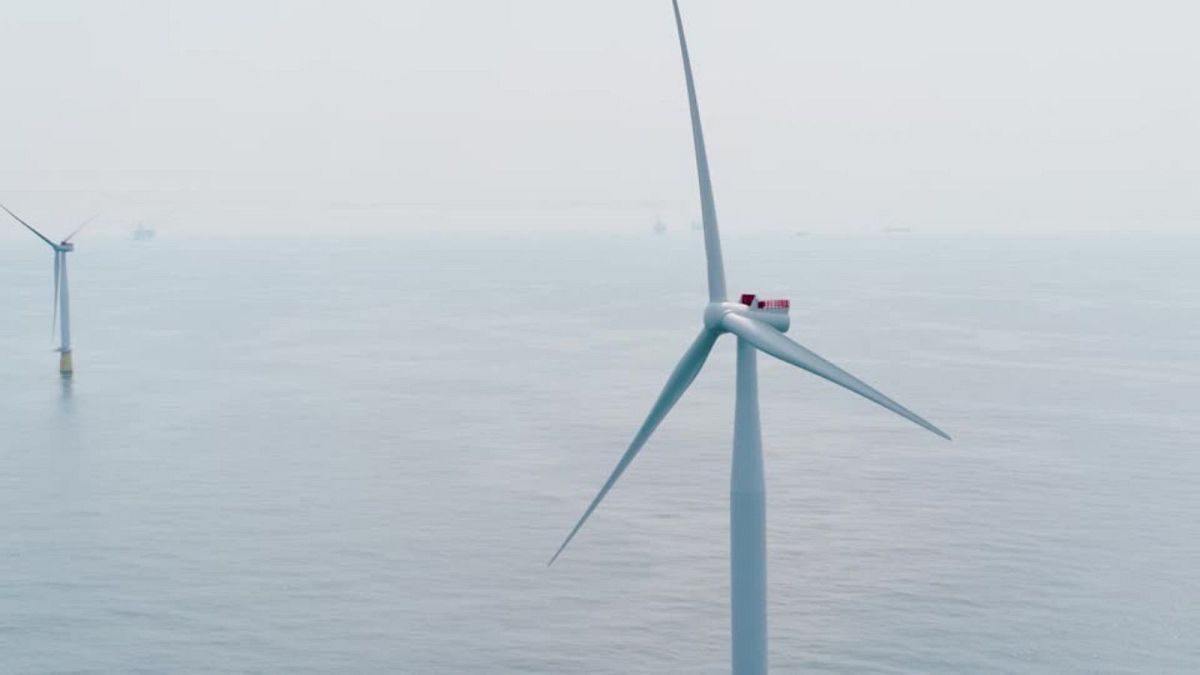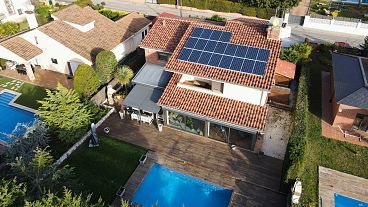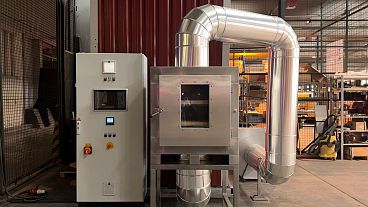Oil giant Equinor is behind the project, but renewables still make up only a tiny fraction of its total energy production.
The world’s biggest floating wind farm has officially launched today off the west coast of Norway.
Fossil fuel giant Equinor is behind the huge Hywind Tampern farm which, with 88 megawatts (MW) of capacity, will generate energy to supply nearby oil and gas platforms.
The project - which uses a new technology to tie 11 giant turbines to the seafloor - has received mixed reaction from environmentalists.
Though it will help cut emissions from the oil and gas fields, climate campaigners argue it’s time to stop drilling for fossil fuels altogether.
Whether oil and gas majors can or should be part of the renewable energy transition is also a deeply divisive issue. A new report from Greenpeace underlies how small a part wind and other energy solutions play in Equinor’s portfolio.
The Norway-based company invests just 3 per cent of its budget in ‘real low carbon’, according to Greenpeace Central and Eastern Europe (CEE)’s analysis of 12 European oil companies.
How will the floating wind farm power oil and gas?
Equinor partnered with other oil firms OMV and Vaar Energi on the wind farm, which started producing energy in November and reached full capacity earlier this month.
The energy produced will cover around 35 per cent of that needed to power five offshore oil and gas platforms in the North Sea. These platforms are carbon-intensive, typically using diesel or gas to run their machinery.
Electrifying them with wind power will cut CO2 emissions from the fields by about 200,000 tonnes per year, Equinor says. That is 0.4 per cent of Norway's total carbon dioxide emissions in 2022.
Hywind Tampen comprises 11 wind turbines fixed to a floating base that is anchored to the seafloor, rather than fixed to the ocean bed - a new technology industry experts say is suitable for use in deeper waters offshore and that Equinor hopes to develop further.
Norway is targeting 30 gigawatts of offshore wind power by 2040, which would double the country’s current power output.
The electrification of offshore and onshore installations is essential if Norway is to reach its national climate goals under the Paris agreement, Greenpeace points out. They contribute about a quarter to Norway's overall emissions.
The country is tendering its first commercial wind farms, including three floating ones, this autumn.
How invested is Equinor in the energy transition?
As the world wakes up to the climate-wrecking powers of oil and gas, producers are finding their own ways to weather the storm.
Shell and BP have increased their oil and gas production in 2023, backtracking on previous promises to scale back. Equinor however, has never deviated from a growth path, Greenpeace says.
The firm, which is responsible for about 70 per cent of Norway’s oil and gas production, increased its profits by 134 per cent in 2022 compared to the previous year, after benefitting from sky high gas prices in Europe following the war in Ukraine.
Renewable power made up only 0.13 per cent of the firm’s total energy production that year.
And the “clear fossil orientation of the business model” is also evident in its investments, according to Greenpeace. Of the almost 10 billion dollars in 2022, $8.3 billion (€7.7 bn) went directly into the expansion or stabilisation of oil and gas production.
Like most oil companies, Equinor is committed to the goal of being a "net zero company" by 2050. But it maintains that even by this deadline, “there will still be a need for oil and gas in the 2050 energy mix." It plans to use carbon offsets to neutralise its remaining emissions.
It’s also set itself a target to increase installed renewables capacity to 12-16 GW by 2030, up from 0.6 GW last year. Large-scale offshore wind projects like Hywind Tampen are set to do the lion’s share of this work.
Greenpeace campaigners remain sceptical about Equinor and the rest of the “dirty dozen” energy companies, however. Only 0.3 per cent of the 12 European companies’ combined 2022 energy production came from renewable sources, it finds. And only 7.3 per cent of these firms' investments last year went towards green energy.
"Instead of providing desperately needed clean energy they feed us greenwashing garbage. Big Oil's unwillingness to implement real change is a crime against the climate and future generations", says Greenpeace CEE campaigner Kuba Gogolewski.



